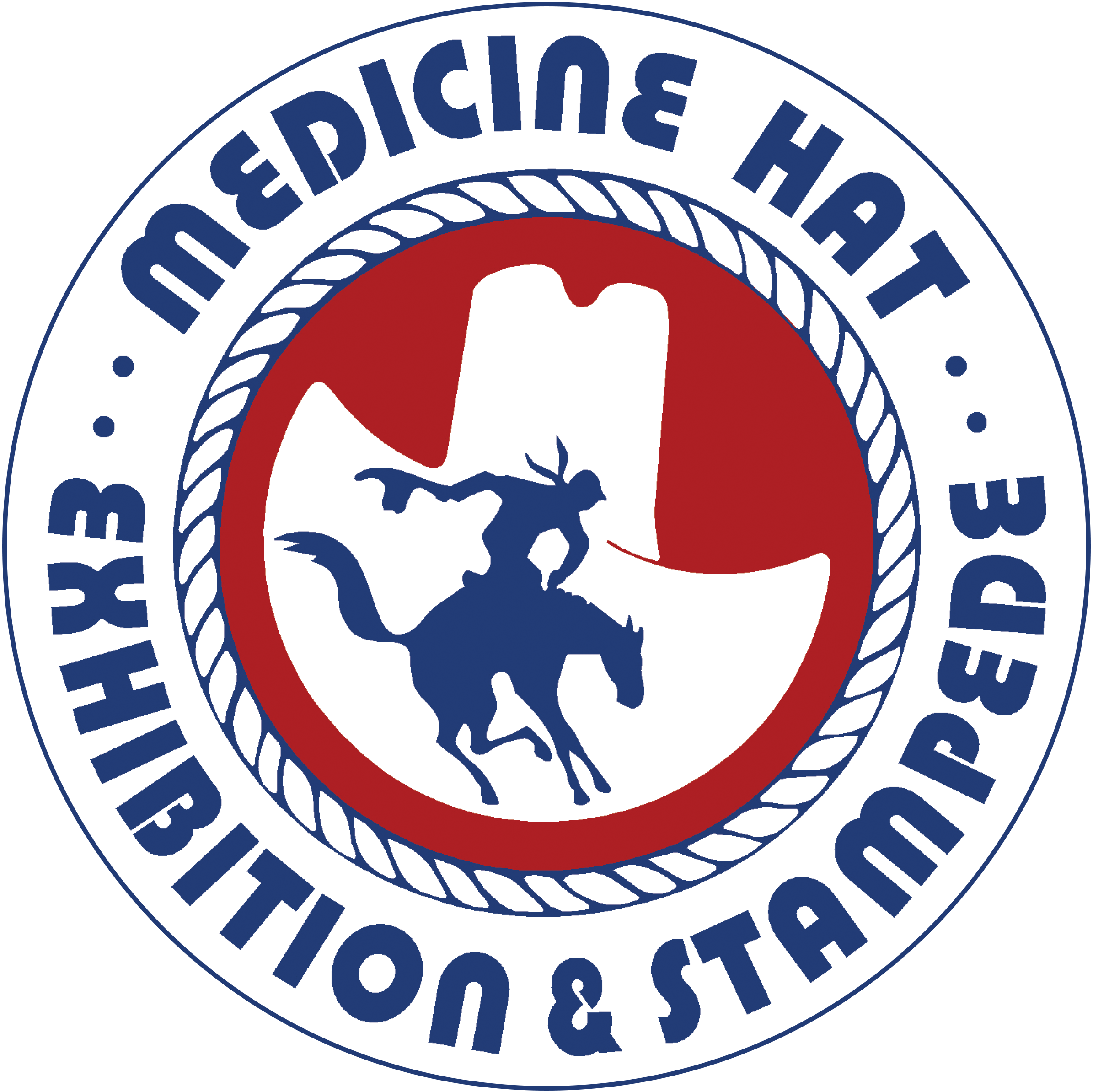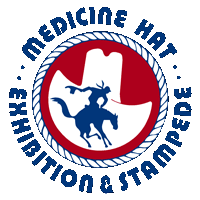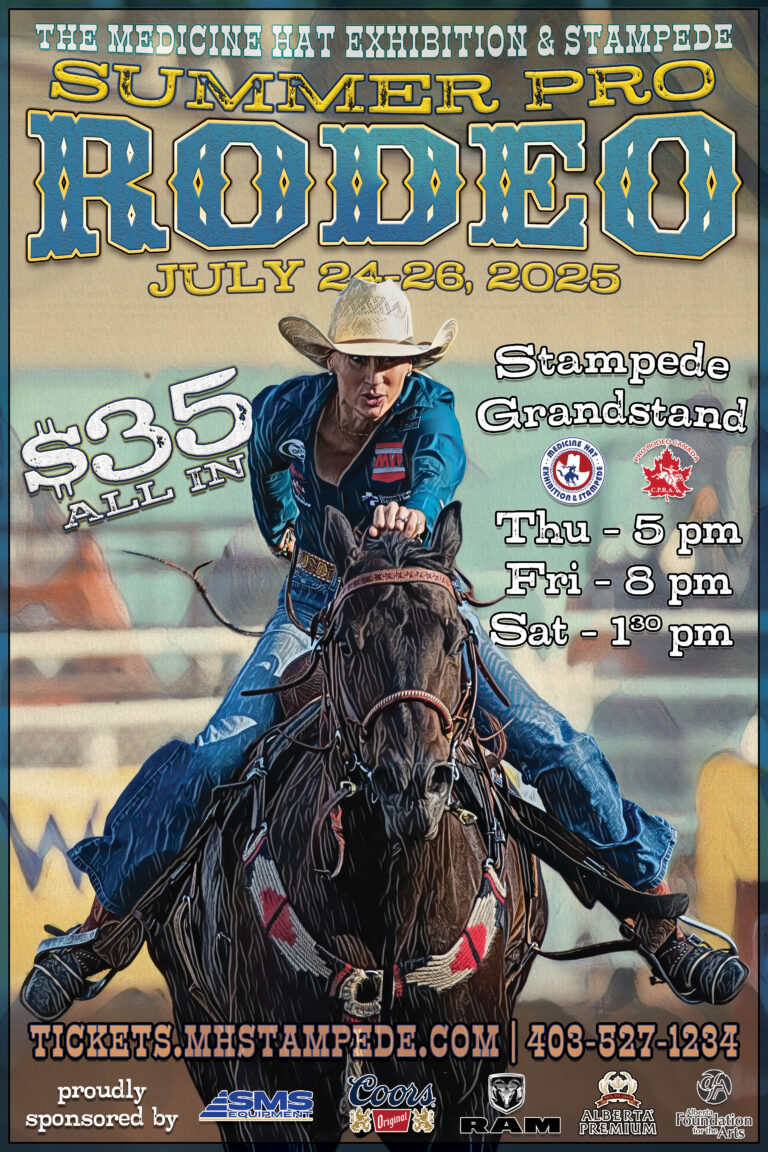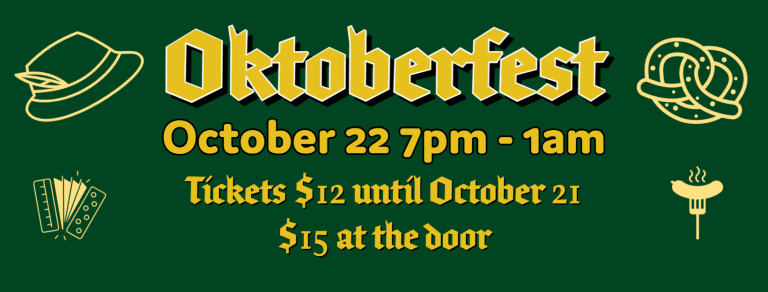July 24-26, 2025
2025 Summer Pro Rodeo
Stampede Thursday (July 24, 2025) – 5 p.m.
Stampede Friday (July 25, 2025) – 8 p.m.
Stampede Saturday (July 26, 2025) – 1:30 p.m.
The Medicine Hat Exhibition & Stampede is proud to be a part of the Canadian Professional Rodeo Tour for the rodeo season. The tour is made up of a number of high-profile rodeos in Canada.
At one-go rodeos and multi-go rodeos points are awarded to 10 places in the go round(s) and average. In the case of a tie, points are added together and split. Also, all contestants will receive 5 pts for competing. The points for the go-round(s) and average are as follows:
- 1st place – 100 points
- 2nd place – 90 points
- 3rd place – 80 points
- 4th place – 70 points
- 5th place – 60 points
- 6th place – 50 points
- 7th place – 40 points
- 8th place – 30 points
- 9th place – 20 points
- 10th place – 10 points
For Rodeo Results, Standings and more information from the Canadian Professional Rodeo Association, please click HERE
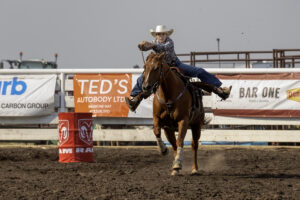
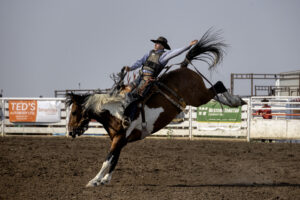
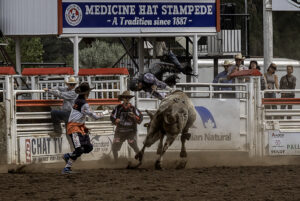
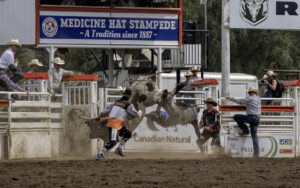
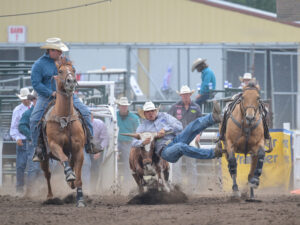
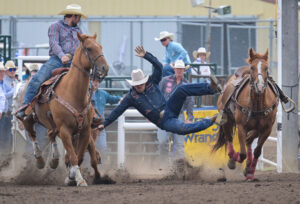
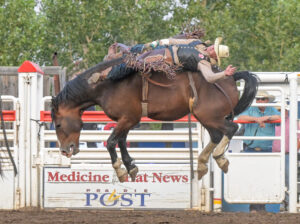
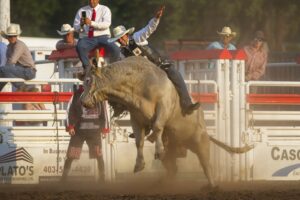
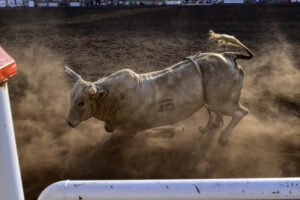
Event Descriptions
Two contestants, two horses, two ropes, one steer and one barrier rope. Team roping requires close cooperation
and timing between highly skilled ropers, a header and heeler. As in other timed events, the team ropers
start from boxes on each side of the chute from which the steer is released into the arena. The steer
gets a head start depending on the length of the arena. The header takes off in pursuit, with the heeler
trailing slightly behind. If the header breaks the barrier before the steer completes its head start, the ropers
are assessed a ten second penalty. Once the header makes his catch he turns the steer to expose the back
legs to the heeler. The heeler then attempts to rope both hind legs. If only one is caught, there is a five second
penalty. The clock is stopped when there is no slack in the ropes and the horses are facing each other.
Tie-down roping is the most technical event in rodeo. At the start of the run, the roper must remain behind
the barrier until the calf crosses the scoreline. Breaking the barrier adds ten seconds to the roper’s time.
After roping the calf, the cowboy dismounts from his horse, runs down his rope and lays the calf down by
hand. If the calf is down when he reaches it, he must allow the calf to get up and then lay it down. The
roper then ties any three legs with a “piggin’ string” (a shorter rope he carries between his teeth). The tie
must hold for six seconds after the roper remounts his horse. The work of the horse is crucial; he must rate
the speed of the calf, stop on cue in a single stride then hold the rope taut while the roper runs to his calf.
Timing, coordination and strength are prerequisites for a steer wrestler. To begin with, he must remain behind the
barrier, which is a rope stretched across the front of the starting box, until the steer crosses the scoreline, giving it
a prescribed head start. If the cowboy breaks the barrier, ten seconds are added to his time. The horse is trained
to run beside the steer and then run on by as the steer wrestler reaches for his steer. The steer wrestler catches
the right horn in the crook of his right arm then must hit the ground with his legs extended forward in order to
bring the steer to a halt. Using his left elbow and forearm as leverage under the steer’s nose, he ‘bulldogs’ the
steer to the ground. The steer must be flat on its side with all four legs extended. The second mounted cowboy is
the hazer and it’s his job to keep the steer running straight, allowing the bulldogger to get down on the steer.
One of rodeo’s most popular events, the barrel race requires the rider and her horse to complete a cloverleaf pattern
around three barrels. The time starts when the competitor crosses an electric beam of light (start / finish
line) and the time is completed when she recrosses the line after completing the pattern. Talented riders on fast,
athletic horses that can blaze through the pattern while keeping all three barrels standing are the key to success.
A five second penalty is assessed for a barrel being tipped over, effectively knocking the rider out of the money.
This event is the most physically demanding in rodeo. The cowboy inserts his gloved hand into the suitcase handle-like bareback riggin which is made of leather and is cinched around the horse. The stress on the riding arm is intense, absorbing most of the horse’s power. The rider will be disqualified for failing to keep his spurs over the break of the horse’s shoulders until the first jump out of the chute is complete, for touching the animal or equipment with the free hand, or for getting bucked off before the end of the eight-second ride. Riders try to spur the horse on each jump, reaching as far forward as they can with their feet, then bringing their spurs back toward the riggin. While they look wild and out of control, the great bareback riders are anything but – keeping their bodies in the middle of the horse’s back while working their spurs to advantage for the entire eight seconds.
In the “classic event of rodeo”, the rider spurs from the animal’s shoulders in an arc-like motion toward the
back of the saddle in time with the bronc’s actions. The cowboy rides in an “Association Saddle” with no horn
while holding onto a braided buck rein. He wears spurs with dull rowels and chaps of light leather. The cowboy
places his hand on the rein carefully to maintain balance and avoid either being pulled down over the
front end or launched out ‘the back door’. To qualify for a score, the rider must have his boots over the break
of the horse’s shoulders until the horse has completed his first jump out of the chute. He cannot touch any
part of the animal or equipment with his free hand, lose a stirrup or get bucked off before the end of the eight
second ride. The higher and harder the horse bucks and the better the cowboy spurs-the higher the score.
Rodeo’s most dangerous event and the toughest eight seconds in sport. The bull rider inserts his gloved hand
into the handhold of a flat, braided rope which is passed around the girth of the bull, into the palm of the
hand, around behind the wrist and into the palm of the hand one more time. A weighted cowbell hangs on
the underside of the rope allowing it to fall free when the ride is completed. During the eight second ride, the
cowboy must keep himself close up on the handhold to prevent his arm from straightening and jerking his
hand loose at the same time keeping his free hand from touching the bull. Riders are not required to spur, as
staying on these strong, athletic, loose-hided and often cantankerous animals is difficult enough. But if the
cowboy is able to use his feet, he can improve the mark from the judges. Rather than pick-up men, skilled
‘’bullfighters’ distract the bull at the end of the ride to allow that cowboy to escape to safety.
Breakaway roping is the event comparable to the men’s tie-down roping on the cowboy side except the cowgirls are not required to dismount and tie the calf. In breakaway roping, the cowgirl has a flag tied close to the end of her rope and a nylon string tied from the rope to the saddle horn. When the rope grows tight after the calf is roped, the string breaks away from the saddle horn and the flag goes flying, signaling the timer to stop the clock. The time in the breakaway roping can sometimes get as fast as 2.0 second run. The women must concentrate on the perfect get out and roping the calf clean around the neck.

